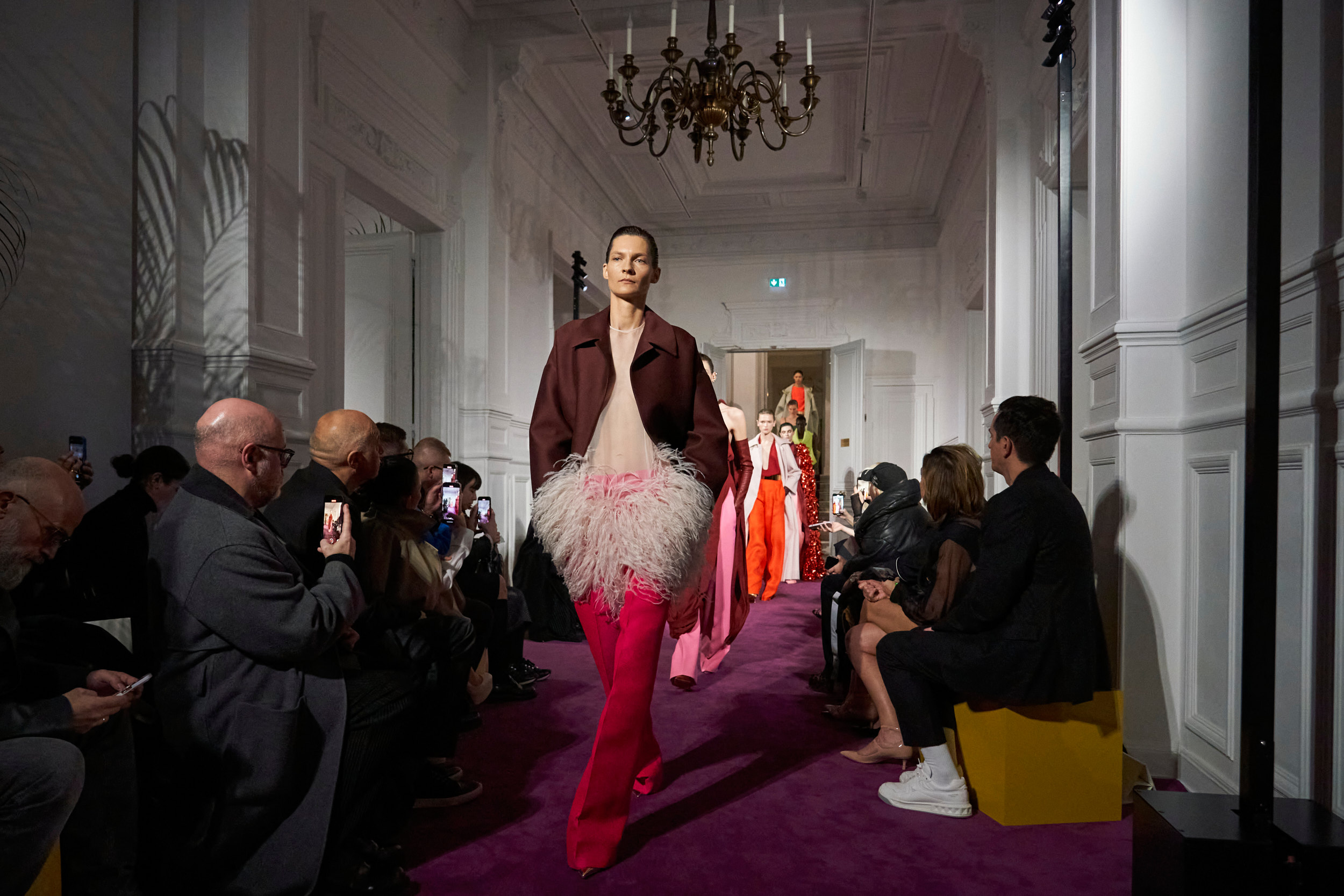Challenging Global Market Conditions Impact Valentino’s Performance Despite Strategic Initiatives
In a challenging year marked by economic pressures across the luxury industry, Valentino has reported a noticeable decline in its financial performance for 2023. The Rome-based fashion house announced a 5% decrease in revenue to 1.35 billion euros from 1.42 billion euros in the previous year, with sales adjusting for constant exchange rates showing a 3% decrease. This downturn reflects broader issues in the luxury market, complicated by fluctuating exchange rates and varying regional market conditions.
Jacopo Venturini, the Chief Executive Officer of Valentino, commented on the resilience of the brand despite the downturn. “It’s important to note that despite this [decline], we, as a company, maintained our positioning and awareness. Our shared vision, centered on client-centricity and colleague-centricity, played a significant role in this achievement,” said Venturini. This statement underscores the company’s focus on maintaining its brand value and customer loyalty amidst difficult trading conditions.

Valentino’s direct sales, which include e-commerce, saw a modest increase of 3% in 2023. This growth was predominantly fueled by strong performance in the Asia Pacific and Japan regions. However, the brand faced significant challenges in Europe, particularly in the second half of the year, while the Americas exhibited some positive signs of recovery. The decline was more pronounced in wholesale revenues, which fell by 12%, a strategic cutback as Valentino shifts its focus from wholesale to retail to enhance customer experience and brand loyalty.
“Our strategy of rebalancing wholesale versus retail was implemented successfully with our DOS network,” Venturini added. “This allows us to provide our clients with unique emotional and immersive experiences, creating stronger brand loyalty to ultimately enhance a sense of community.” This strategic pivot highlights Valentino’s efforts to control the brand experience more directly and foster stronger connections with its clientele.
As of December 31st, Valentino operates 264 stores in 207 locations, with 232 directly managed. The company’s expansion continued with the opening of a new flagship store in London on Sloane Street, featuring minimalist design elements and signature brand colors. This new store concept, developed in-house, was also rolled out in new boutiques in Florence, Geneva, and Paris on Avenue Montaigne, followed by Shanghai at Plaza 66.
Financially, Valentino reported that earnings before interest, taxes, depreciation, and amortization, including IFRS16 impact, reached 314 million euros, marking a 7% decrease from the previous year. Operating profit also saw a significant decline of 18% to 99 million euros. Despite these challenges, Valentino’s beauty and fragrance sector, managed under a license with L’Oréal since January 2019, enjoyed a robust 42% increase in sales, showcasing a strong consumer demand in this segment.
The e-commerce sector completed its global integration in 2023, contributing to 11% of the total sales and advancing the company’s omnichannel strategy. This development is crucial as Valentino continues to adapt to the increasingly digital-first consumer landscape.
The year also brought significant changes in leadership, with Pierpaolo Piccioli departing after 25 years at the helm of Valentino’s creative direction. On March 28, The Impression reported that Piccioli would be succeeded by former Gucci creative director Alessandro Michele, whose appointment was confirmed shortly thereafter. Michele’s first collection as creative director is eagerly anticipated for spring 2025 in Paris.
In a strategic move last July, Kering acquired a 30 percent stake in Valentino for 1.7 billion euros, partnering with Qatari investment fund Mayhoola, which outlines potential future collaborations and investments.
